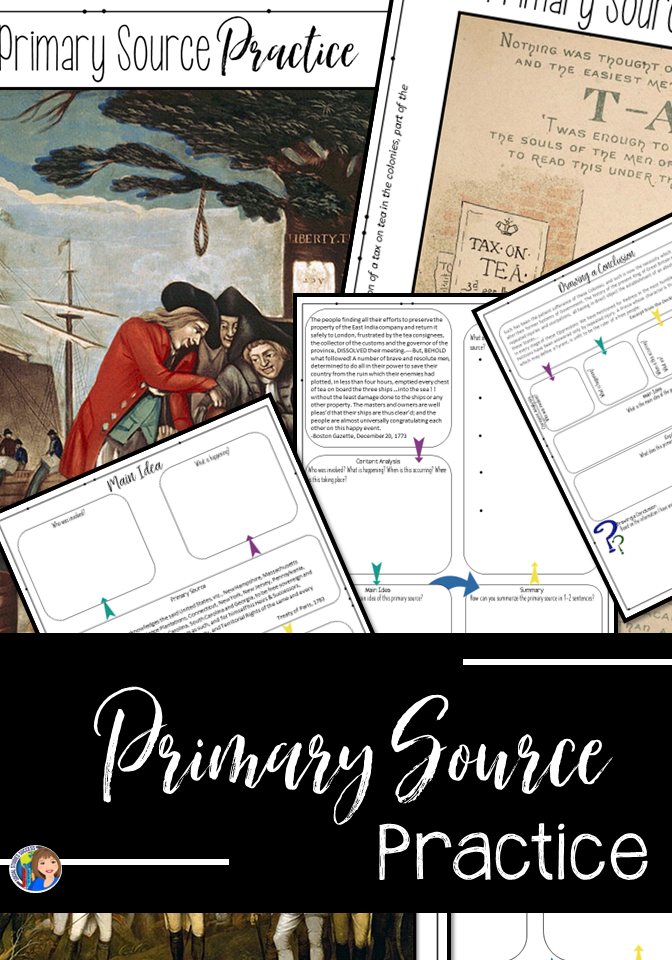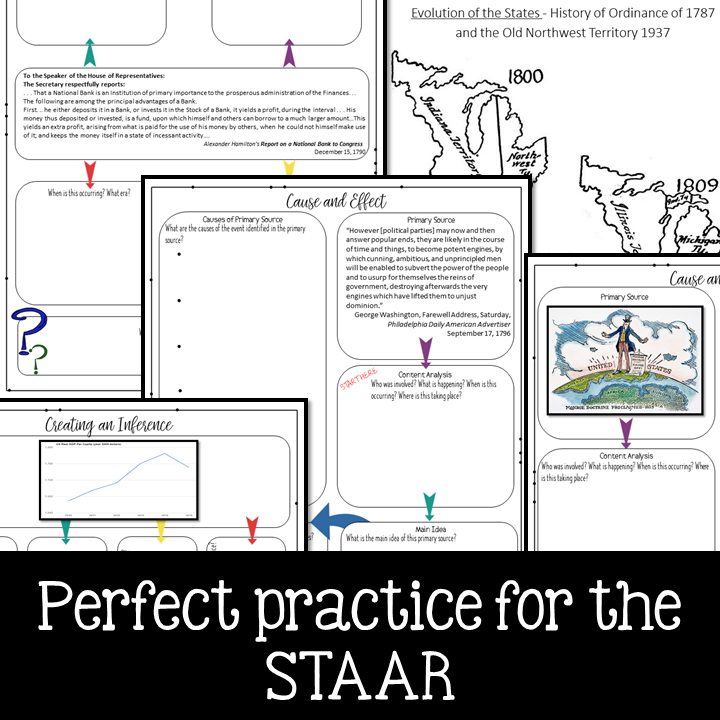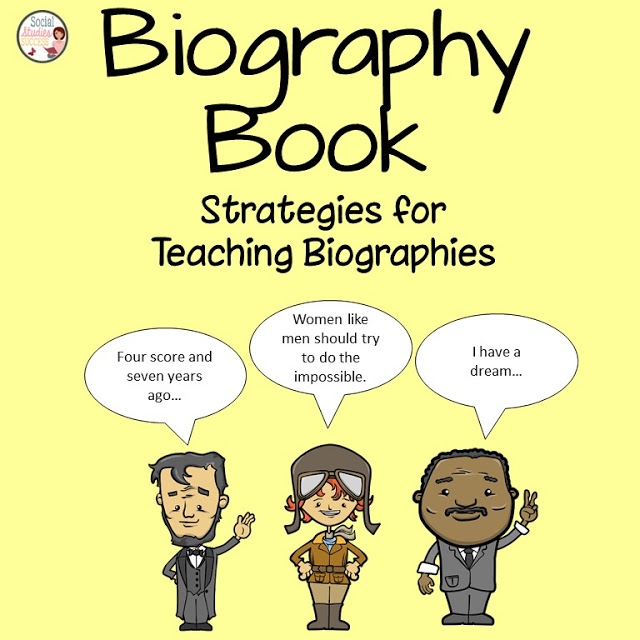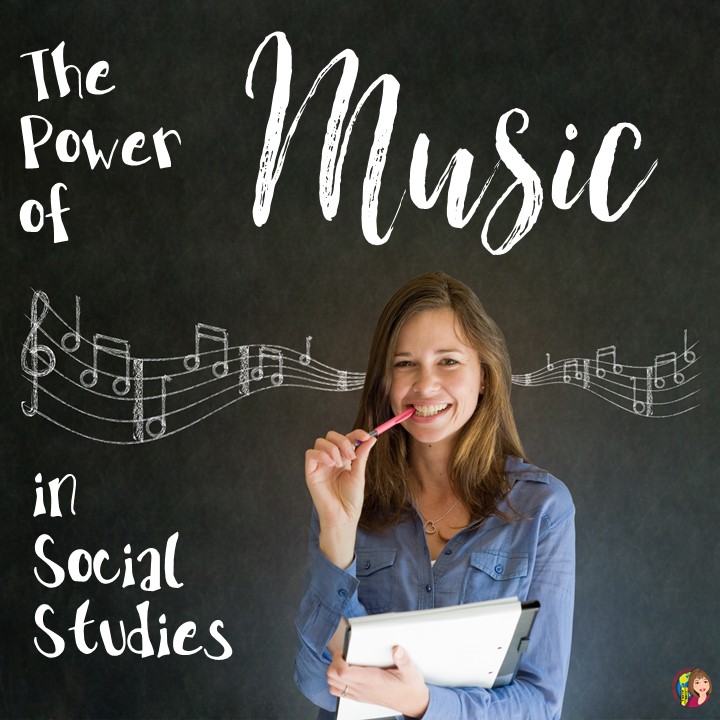Primary Source Practice
This spring, I had an epiphany! I was sitting down with a friend, planning out a new workshop on how to analyze primary sources – students were really struggling analyzing primary sources! We pulled out all of the STAAR release questions and began to analyze the data. When I was looking at the primary source questions side by side, I started to notice a pattern… the types of questions asked on the STAAR test are dependent on four specific Social Studies skills: cause and effect, main idea, inferencing, and drawing a conclusion.
When I think about the traditional way teachers practice primary source analysis, I can see a gap. Many times students aren’t required to think about the primary source the same way they are required to think on the STAAR. To help address this gap, I have created graphic organizers to help students think through each of these four specific skills: cause and effect, main idea, inferencing, and drawing a conclusion.
 This particular skill appears in two ways on the STAAR; both the causes and effects of a primary source event. To help students think through the process of analyzing the cause and effect of primary source events, I have developed two different graphic organizers that show both the events leading to a cause, and the effects of a cause.
This particular skill appears in two ways on the STAAR; both the causes and effects of a primary source event. To help students think through the process of analyzing the cause and effect of primary source events, I have developed two different graphic organizers that show both the events leading to a cause, and the effects of a cause.
 Finding the main idea is a skill often associated with reading primary source excerpts. Students are required to read the excerpt and identify the topic prior to answering a specific question about the primary source. These graphic organizers will help students find the main idea in order to answer subsequent questions.
Finding the main idea is a skill often associated with reading primary source excerpts. Students are required to read the excerpt and identify the topic prior to answering a specific question about the primary source. These graphic organizers will help students find the main idea in order to answer subsequent questions.
Creating an inference and drawing a conclusion are actually two different discrete skills that are often associated together. They require different methods to practice each skill. Each of the graphic organizers I have designed will help students either create an inference or draw a conclusion.
Skill Specific Instruction
Primary Source Practices are designed for you to model how to break down a primary source from beginning to end following the pattern of a specific skill. In the resource you purchase, you will receive 5 types of graphic organizers for these skills, with a variety of primary sources! Paintings, quotes, illustrations, political cartoons, and excerpts all provide opportunities for your students to practice skill based thinking.
Model, Model, Model
The first step of introducing Primary Source Practice is to MODEL THE THINKING that is involved with analyzing a primary source. Read the primary source excerpts to your students and define any unfamiliar words. Explain to your students that analyzing a primary source is based on specific thinking skills and if they can recognize the skill, the primary source will become easier to read and analyze. Project one of the Primary Source Practice pages and model step by step how you would analyze the source. Ask questions as you model, so that your students can help you complete the graphic organizer. Use these Primary Source Practice pages towards the end of your unit. The more background knowledge your students have on the topic, the easier the primary sources will be for your students to analyze.
Click on the links below to explore the different sets of Primary Source Practice!
More Primary Source Practice activities can be found in my shop, including resources for high school U.S. History.












